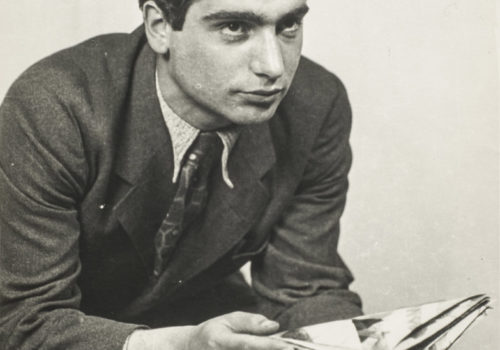At a time when discussions of photojournalism focus more than ever on form, the Kati Horna exhibition at the Jeu de Paume arrives to broaden the debate. Horna (née Deutsch), who quickly became one of Mexico’s most respected documentary photographers, was born in Hungary in 1912.
Like many artists around her in the 1930s, from a very young age Horna held leftist ideas and was soon forced to leave Hungary as a result of her political beliefs. In her native country, Horna fell in with the legendary photojournalist Robert Capa when she was just a teenager and still called Endre Friedmann. They met again in Paris and she followed him to Spain during the Civil War in 1936. Off the battlefield, she created an original manifesto against war. Unlike Capa, she didn’t publish in Life but in the anarchist journal Umbral, which was closer to her politics. And also unlike Capa, she didn’t travel to New York under a pseudonym but went instead to Mexico, fleeing Nazism with an Andalusian sculptor whose name she took.
“When photographing civilians during a conflict was almost unheard of, Horna pioneered a new approach. From Barcelona, Aragon and Catalonia, she sent frames which documented the pain, confusion and suffering borne by the ordinary people of Spain, regardless of their political affiliation,” wrote Joanna Moorhead in The Guardian during the first Kati Horna exhibition held in London in 2010, the year she died. During the war, Horna left the front to document civilians, photographing children caught up in the conflict, anarchists (the images were used for propaganda posters), and other deportees. She adopted an allegorical style borrowed from her artist friends, like the Mexican painter Remedios Varo, whose portrait she took in 1957. She wears a mask, and the two faces on the same plane are reminiscent of Picasso’s pictorial experiments.
The exhibition at the Jeu de Paume, organized in collaboration with the Museo Amparo de Puebla for Horna’s centenary, is the first major retrospective of the photographer and activist. It showcases her decidedly surrealist style in genres as varied as war photography, portraits, still life and social reportage. For example, in a 1938 photograph of a Spanish cathedral, shot at night in black-and-white, what appears to be a face drawn on a wall by night shadows turns out to be a painting of the Madonna, her eyes filled with sadness and kindness. Horna played with shapes and superimposition to create a metaphorical, indirect yet effective account of what she witnessed, and one which she could enrich away from the front. Even more symbolic than her Madonna is her series shot around the same time in Paris, in collaboration with the German illustrator Wolfgang Burger. Produced between 1935 and 1937, Hitlerei uses eggs and other vegetables to ridicule Hitler, combining sharp humor and subtle tragedy to condemn the political situation in Europe.
EXHIBITION
Kati Horna
From June 3rd to September 21st, 2014
Jeu de Paume
1, place de la Concorde
75008 Paris
France
Le Jeu de Paume présente au même moment les expositions d’Oscar Munoz et de Kapwani Kiwanga
BOOK
Kati Horna
Peter Baki, Jean François Chévrier, Estrella de Diego, Juan Manuel Bonet, José Antonio Rodríguez, Angeles Alonso, Norah Horna
Co-Editions RM + Museo Amparo + Jeu de Paume
352 pages
160 photographs
23 x 30 cm
ISBN: 978-84-15118-73-2
http://www.jeudepaume.org/index.php?page=article&idArt=2010&lieu=1
http://www.independent.co.uk/arts-entertainment/art/features/the-woman-who-captured-robert-capas-heart-1999038.html
http://www.editorialrm.com/2010/product.php?id_product=291&id_lang=1
















